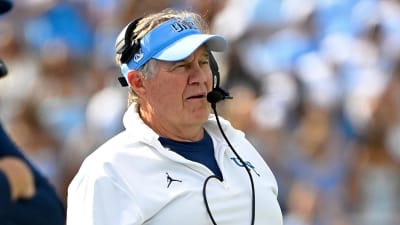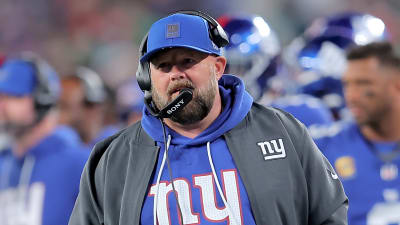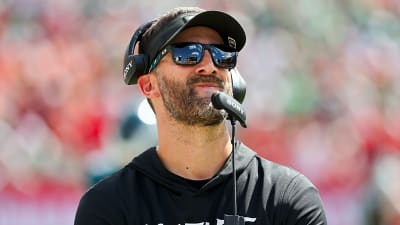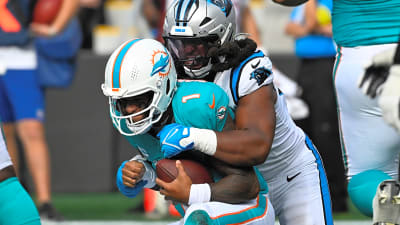
With the NFL trade deadline approaching, teams are separating into two distinct camps: buyers looking to make a playoff push and sellers offloading assets for the future. Many expected the Chicago Bears, with clear holes on their roster, to be active participants, perhaps looking for a veteran to plug a gap. However, recent reports suggest the Bears are content to stand pat, and the reason why is turning heads. It isn’t General Manager Ryan Poles holding back; it’s new head coach Ben Johnson.
This surprising development signals a significant shift in philosophy at Halas Hall. This article will explore the strategy behind theChicago Bears trade market stance, examining the coach’s long-term vision, the current state of the roster, and what this patient approach means for the future of the franchise.
A Coach’s Long-Term Vision
In a typical NFL power structure, the general manager is the architect of the roster, while the head coach works with the players provided. A coach, often under pressure to win immediately, might push the GM to trade future draft picks for immediate help. According to a report from Brad Biggs of the Chicago Tribune, the roles in Chicago appear to be reversed. Johnson, the new head coach, is reportedly the one advocating for a quiet trade deadline.
This move is both unusual and incredibly insightful. It demonstrates that Johnson is not focused on a quick fix for the 2025 season. Instead, he has a clear, long-term vision for building a sustainable winner. He understands that this roster is not one or two veteran players away from Super Bowl contention. The team is still in a transitional phase, and true contention will be built through the draft, not by acquiring expensive, aging veterans.
Johnson’s philosophy appears to be rooted in two key principles:
- Asset Accumulation: Mid-season trades for established players often require surrendering valuable draft capital—the lifeblood of a rebuilding team. Johnson recognizes that every draft pick is an opportunity to add young, cost-controlled talent that can be molded by his coaching staff. Sacrificing a Day 2 or Day 3 pick for a player who might not be part of the long-term solution is a shortsighted move that he is unwilling to make.
- Player Development: Johnson has faith in his coaching staff and their ability to develop young players. Rather than bringing in a veteran to take snaps away from a developing prospect, he prefers to give those reps to the players who are part of the future. This season is as much about evaluation as it is about winning. The coaching staff needs to see what they have in their current young players to make informed decisions about the roster moving forward.
The Reality of the Bears’ Roster
Johnson’s patient approach is grounded in a realistic assessment of where the Chicago Bears currently stand. While the team has exciting young pieces, including a franchise quarterback in Caleb Williams and a dynamic receiver in Rome Odunze, significant holes remain. The roster is not yet championship-ready.
Key areas of concern include:
- Pass Rush: Despite the significant investment in Montez Sweat and the addition of Dayo Odeyingbo, the pass rush has been inconsistent. The defense still lacks a dominant, game-wrecking force opposite Sweat.
- Offensive Line: The search for a franchise left tackle continues. While the line has shown improvement, it is not yet an elite unit capable of dominating top-tier defensive fronts.
- The Secondary: Both of the team’s starting safeties, Jaquan Brisker and Kevin Byard, are set to become free agents after the season, creating a potential massive hole on the back end of the defense.
Given these realities, trading a valuable draft pick for a running back or a situational pass rusher would be like putting a bandage on a broken bone. It might provide temporary relief, but it doesn’t address the underlying structural issues. Johnson understands that the resources required to fix these problems will come from the draft and strategic free-agent signings, not from a splashy mid-season trade.
Implications for the Future: A Unified Vision
The most encouraging aspect of this news is the apparent alignment between the head coach and the general manager. In many organizations, a philosophical clash between a “win-now” coach and a “build-for-the-future” GM can lead to friction and dysfunction. In Chicago, it appears Johnson and Poles share a unified vision for building the team.
This alignment has several positive implications for the Bears’ future:
- Stability and Patience: It signals that the organization is committed to seeing this rebuild through the right way, without taking shortcuts. This patience allows for a more methodical and disciplined approach to roster construction.
- Empowerment of the Coaching Staff: Johnson’s stance shows that he believes in his ability to coach and develop the players he has. This confidence in his staff’s teaching ability is a crucial element of a healthy program.
- A Focus on the Draft: By preserving their draft capital, the Bears are ensuring they have the maximum number of opportunities to infuse the roster with talent in the 2026 NFL Draft. This is how successful teams build their core.
Conclusion: Building the Right Way
While the idea of a mid-season trade is exciting for fans, the decision by the Chicago Bears to stay out of the market reflects a mature and disciplined team-building strategy. The influence of Ben Johnson on the Chicago Bears trade market approach is a strong indication that the new head coach is not just thinking about the next game, but about the next five years.
He is prioritizing the long-term health of the franchise over a short-term fix. By focusing on player development and the accumulation of draft assets, Johnson is laying the foundation for a team that can compete for championships for years to come. This patient, methodical approach may not produce immediate gratification, but it is the hallmark of a sustainable winning program. For a fanbase that has endured years of inconsistency, this commitment to building the right way should be the most encouraging sign of all.
More must-reads:
- NFL Draft intel: Five prospects on the rise — including Alabama’s Ty Simpson
- 49ers LB Fred Warner to undergo surgery
- The 'NFL total touchdown pass leaders' quiz
Breaking News
Trending News
Customize Your Newsletter
 +
+
Get the latest news and rumors, customized to your favorite sports and teams. Emailed daily. Always free!








